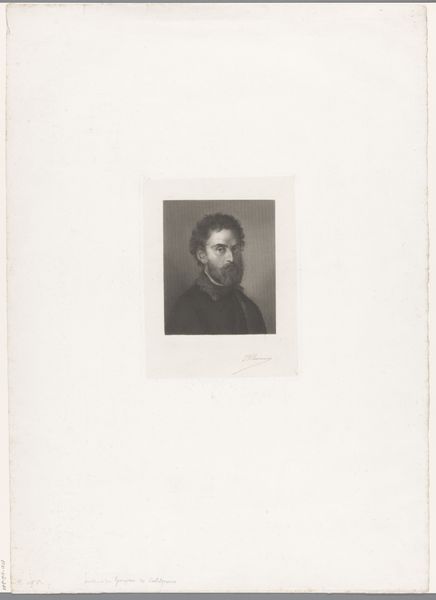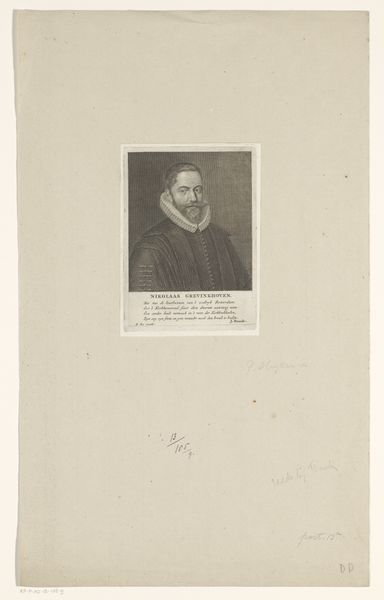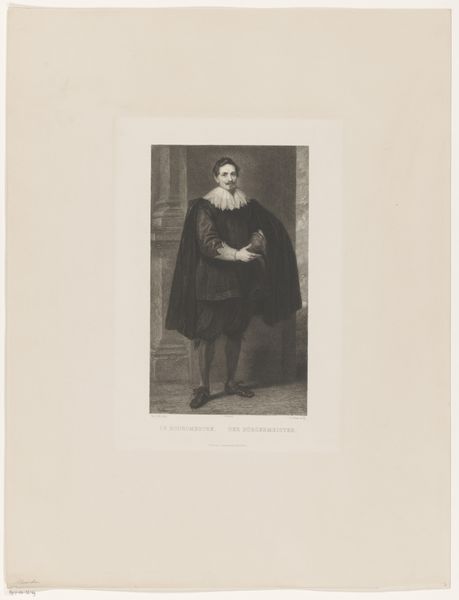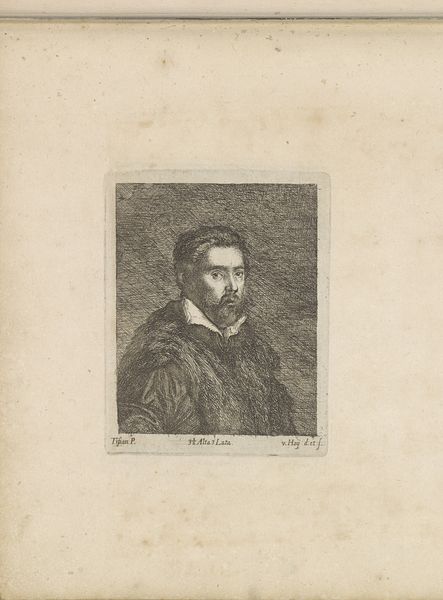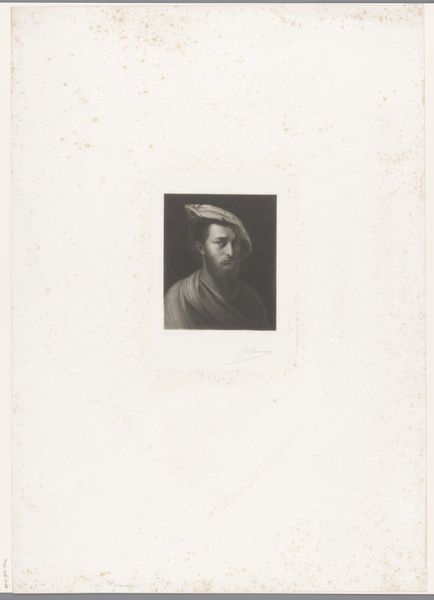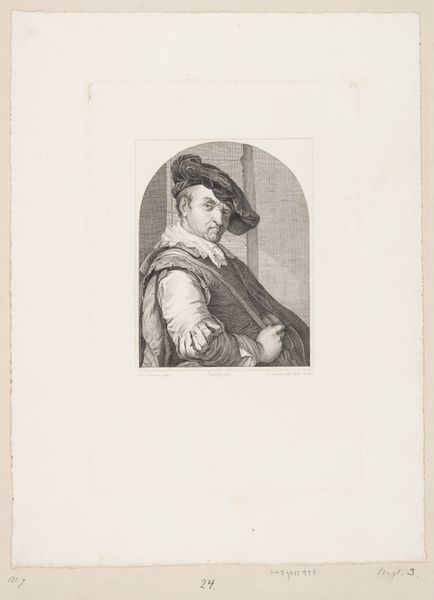
drawing, print, ink, engraving
#
portrait
#
drawing
#
self-portrait
# print
#
11_renaissance
#
ink
#
line
#
engraving
Dimensions: height 237 mm, width 179 mm
Copyright: Rijks Museum: Open Domain
Editor: This engraving, "Portret van onbekende man met plooikraag," or "Portrait of an unknown man with a pleated collar" by William Unger, dating from 1847 to 1889, has a somewhat melancholic quality. What stands out to me are the sharp, clean lines contrasting with the overall muted tones. How do you interpret this work? Curator: Notice how the ruff, that pleated collar, practically frames the face. This draws our eye directly to the subject's expression, and also serves as an obvious status symbol. Consider how such attire visually declared the wearer's separation from manual labor, literally keeping them at a distance from the world. Doesn't it almost become a kind of barrier, both physically and metaphorically? What do you make of the subject's gaze? Editor: It's direct, almost confrontational. It makes me a bit uneasy. I initially attributed it to the somber tone, but perhaps that direct gaze plays a significant part. Curator: Precisely! This kind of direct engagement with the viewer becomes a powerful element in portraiture. Unger is employing it, maybe to invite us to question identity itself, especially when coupled with the "unknown man." Perhaps Unger means to show us the universal in a specific historical moment? Editor: That's fascinating. I hadn’t considered how the unknown nature of the subject might amplify the message about identity. Curator: These historical portrait engravings offer intriguing explorations of presence and absence. Unger's line work not only depicts but evokes, hinting at the complexities beneath the surface. Editor: I learned to appreciate not just the technical skill but the loaded imagery embedded in such portraits. Thanks for expanding my interpretation! Curator: My pleasure; visual culture becomes even richer when we learn its symbolic languages.
Comments
No comments
Be the first to comment and join the conversation on the ultimate creative platform.

